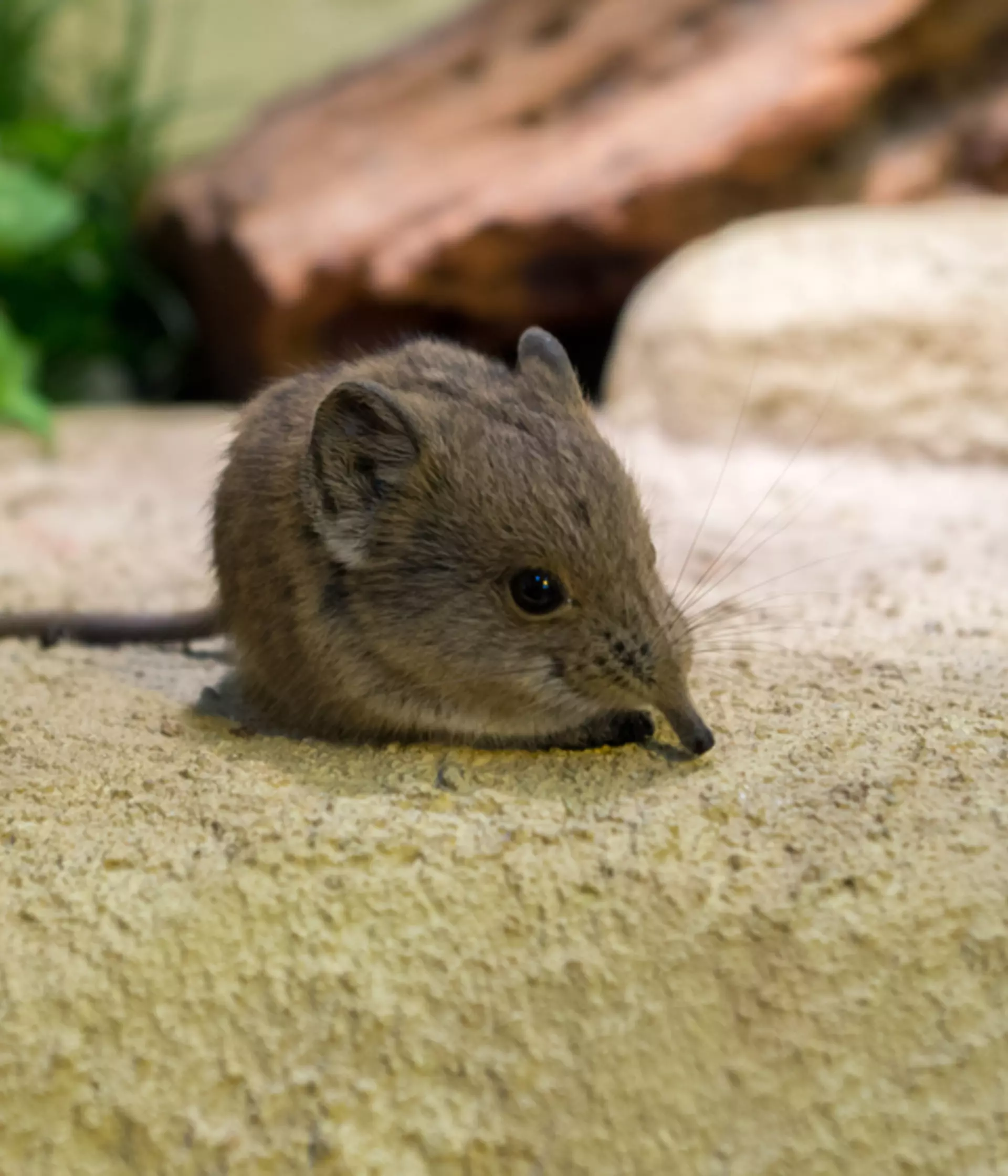Area of zoo
Enclosure status
Temporarily closed
IUCN status
Least Concern
Scientific name
Macroscelides proboscideus
Order
Macroscelidea
Type
Mammals
Family
Macroscelididae
Region
Africa
Habitat
Shrubland, Desert
Please note that we do not currently have sengis in our collection at London Zoo.
Sengi facts
- Although sengis look like rodents, they are actually more closely related to elephants!
- Sengis only give both to one or two babies at a time.
- Sengi babies are up and running very quickly after birth. They need to be able to keep up with mum and she will move them around her territory making sure they are sheltered from predators such as lizards and hawks.
- Despite being widespread and highly active during the day, sengis are very difficult to find in the wild, needing cover from predators such as birds of prey!
- Sengis are one of the fastest small mammals, having been recorded to reach speeds of 29 kilometres per hour (18 mph).
- Compared to other mammalian insectivores, sengis have relatively large brains.
- Sengis mate for life!
- Female sengis undergo a menstrual cycle similar to that of human females and the species is one of the few non-primate mammals to do so. Sengis were even used in the 1940s to study the human menstruation cycle!
- In 2020, the Somali sengi was rediscovered in Djibouti after having been ‘lost’ in the wild for over 50 years!
What do sengis look like?
Our short-eared sengis are the smallest of all sengi and can fit into the palm of your hand, but most sengi are much larger. The biggest sengi weighs around 700g, around the same weight as a Guinea pig.
Where are sengis from?
Sengis live all across Africa, apart from the Sahara desert. Our short-eared sengi live in southern Africa in Namibia, Botswana and South Africa
Sengi threats
- Pressures from human encroachment destroying habitat – such as farming livestock which clears ground cover and tramples territory sengis use to build their tracks.
- Forest fires which are becoming more frequent due to climate change.
